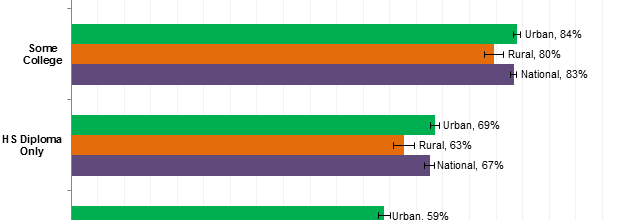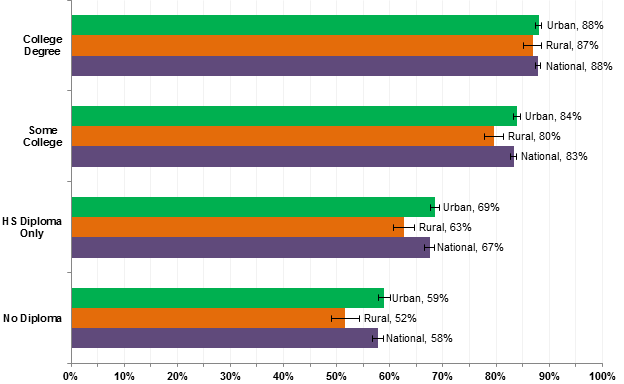American Broadband Policy: Information over Manipulation
Susan Crawford’s weekend op-ed in the New York Times, Donald Trump’s Multi-Pronged Attack on the Internet, has a lot of people very upset, and for good reason. While it appears to make a token brush with facts, it’s mainly an appeal to the darkest of human emotions. The opening paragraph gives away much more than it should:
If there’s one thing that brings Americans together, it’s our hatred of the giant companies that sell us high-speed data services. Consumers routinely give Comcast, Charter (now Spectrum), Verizon, CenturyLink and AT&T basement-level scores for customer satisfaction. This collective resentment is fueled by the sense that we don’t have a choice when we sign up for their services. [emphasis added]
She’s asking readers to forget about all the things that separate civilization from savagery and give in to the base emotions, and then immediately tries to steer the anger she’s ginned up in the direction of her pet policy prescription, municipal broadband.
Industries We Love and Hate
The ISP industry as a whole has low customer satisfaction ratings: in the American Customer Satisfaction Index, ISPs are at the bottom, followed by pay TV services and municipal utilities. Newspapers are no longer rated, but when they were (last in 2012), they were America’s most hated industry. This probably has more to do with missed deliveries than with editorial bias. Airlines, health insurance companies, Internet social media and the Post Office are also low-satisfaction industries.
America’s most-loved industries are televisions and video players, soft drinks, personal care and cleaning products, and food manufacturers. I would submit that these ratings don’t convey a message about industry concentration.
While Crawford argues that we hate our ISPs because we don’t have choice, we mysteriously love a soft drink industry in which two firms – Coke and Pepsi – command 72% of the market. More tellingly, the soft drink industry is declining while the ISP business is growing.
Why Consumers Love and Hate
Consumers are afflicted by negativity dominance, a condition where were remember bad experiences more than good ones. We don’t use ISPs for their own sake, but rather as means to an end: watching that Netflix movie or that cat video. If the experience goes well, the content gets the credit and if it doesn’t, the ISP gets the blame. Negativity dominance is typically associated with access gateways:
Like with bridges, we’re just looking for the basics from these companies, says Wharton Marketing professor Peter Fader: “You never want to be delighted by your relationship with your cable [company], your airline or health care company. You want a steady, boring reliability.” London Bridge might have had some really beautiful architecture, but no one cares about that when it’s falling down.
The Necessary Evils are all businesses particularly afflicted by negativity dominance, a bias in our judgment and decision-making processes that causes bad experiences to overwhelm positive ones in our minds. “The benefit of going high above [customer expectations] isn’t that great, and the cost of missing is severe,” says Fader.
The negativity dominance in these industries means there aren’t sufficient incentives to invest in customer service improvements. Customers will hate them for screwing up—and they’re going to screw up—so why should they bother wasting money in what amount to ineffectual apologies? While restaurants can calm patrons with a free beer and an apology, no number of free airplane bottles of booze on your next flight will make up for having to cancel your first one.
When we drink a Coke, we experience the pause that refreshes and associate it with the beverage. If there’s a pause in the cat video, it frustrates. When this happens, we blame the ISP even though it may well have been someone else’s fault. The well-performing network is invisible, but the one with a problem is on everyone’s mind. This was the first lesson I learned as a fledgling network engineer in the ’70s.
Sleight of Hand
ISPs as a whole could invest more in customer service – some have – but there’s not much payback because of way our brains are wired. Consequently, it’s wrongheaded to use the customer satisfaction index as a pretext for changing the ownership model for the Internet service industry.
It’s downright bizarre to advocate for a municipal utility model as a remedy for these largely unavoidable customer satisfaction ills: municipal utilities are the third most hated industry of them all while doing a much simpler job than ISPs.
I really don’t think Crawford has thought this muni network thing through.
A More Nuanced View
Crawford used to be much more thoughtful about it. In 2005 she acknowledged some truths that she seems to have forgotten:
I’m an enormous fan of pervasive, free, open wireless broadband access. Last week’s news about Philadelphia’s move towards city-provided broadband (including wireless access in public places, and access at up to 60 mph) was gripping. But this message, posted to Dave Farber’s Interesting People listserv, deserves attention.
You need a computer to access broadband. Communities need libraries. Streets need to be fixed. Is broadband access a luxury that already-comfortable people — people who own laptops — are getting? Or is the pervasive presence of broadband something that will improve economic lives to such a degree — at comparatively little cost — that cities should invest right now in providing it? (This was the point made by a follow-up message posted to the Farber list.)
I realize that this issue has been kicked around extensively, and that many people I respect decided long ago that municipal broadband should be a priority. We are worried (perhaps incorrectly) that the US lags far behind other countries in broadband rollout, and we’re looking for ways to encourage the growth of broadband penetration.
The luxury issue and the lagging behind issue are real. Is it sensible for a community with mediocre broadband to sacrifice essential services to increase its average broadband speed from 10 to 50 Mbps? Given the fact that broadband speeds tend to double every three years, it’s likely that the higher speeds will come from the incumbent in the fullness of time anyway.
What About that Falling Behind Thing?
Akamai says America’s average peak connection speed – AKA broadband speed – increased from 37 Mbps in Q3 2013 to 71 Mbps in Q3 2016. This national average smooths over the fact that most ISPs have increased speed in most places while some haven’t done so well – especially those that serve rural areas.
But average speeds are less important than the more basic metrics: how many people are using the Internet and how heavily are we using it? NTIA examines these questions through the U.S. Census Bureau’s Computer and Internet Use Supplement to the Current Population Survey.
The data show people in rural areas using the Internet less than those in urban areas, but with a curious twist: rural Americans with college educations use the Internet at virtually the same level as their urban cousins: 87 to 88% have Internet connections at home.
Rural Dynamics
The figures have some other interesting twists that I didn’t expect and I’ve studied Internet buildout and use for ten years: rural Americans use less email, less social networking, and less Netflix than urban people do:
In terms of online services and functions, rural residents who indicated they did use the Internet were still less likely than urban residents to use email (86 percent to 92 percent), social media (68 percent to 71 percent), and online video or voice conferencing (28 percent to 38 percent) than Internet users in urban areas. While some of these differences may seem relatively modest, they are statistically significant. Lastly, rural individuals were more likely than their urban counterparts not to own any Internet compatible devices (33 percent to 26 percent), and were less likely to own more than one device.
The reasons for this different usage pattern are unknown, but I would guess they have something to do with the fact that the rural lifestyle is more oriented around going outdoors than sitting at a desk having Facebook chats with the people with whom we went to highschool. It’s definitely a topic for further study.
More Information, Less Manipulation
Crawford’s op-ed – essentially the same one she’s written over and over since leaving the White House in 2010 – has too much emotion and not enough insight. While the political players are always going to engage in persuasion, it’s important for all of us to understand the factual landscape in which we enact policy.
While it’s true that Americans aren’t dancing in the streets over ISP customer service, it’s unrealistic to claim that replacing them with municipal utility providers will change this dynamic at all.
And it’s tempting to argue that the US is falling behind Korea on broadband speed, but that would make very little difference to consumers even if it were true. The goal of broadband policy is to extend networks to every populated area, then to encourage people to connect, and finally to ensure that economics enable networks to keep pace with application needs.
Susan Crawford cared about these things before she took that White House job. Perhaps she will again some day.




